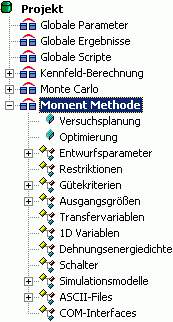Latin Hypercube Sampling Software Free



Latin hypercube sampling (LHS) is a form of stratified sampling that can be applied to multiple variables. The method commonly used to reduce the number or runs necessary for a Monte Carlo simulation to achieve a reasonably accurate random distribution. Simlab 4.0 for Global Sensitivity Analysis. SIMLAB can be dowloaded for free from the Joint Research Centre's web site. Latin hypercube sampling is that an existing design cannot be.
Latin Hypercube Sampling Software Free Download
In two dimensions the difference between random sampling, Latin Hypercube sampling and orthogonal sampling can be explained as follows:. In random sampling new sample points are generated without taking into account the previously generated sample points. One does not necessarily need to know beforehand how many sample points are needed. In Latin Hypercube sampling one must first decide how many sample points to use and for each sample point remember in which row and column the sample point was taken. Note that such configuration is similar to having N rooks on a chess board without threatening each other. In Orthogonal sampling, the sample space is divided into equally probable subspaces.
Latin Hypercube Sampling In R
All sample points are then chosen simultaneously making sure that the total ensemble of sample points is a Latin Hypercube sample and that each subspace is sampled with the same density. Thus, orthogonal sampling ensures that the ensemble of random numbers is a very good representative of the real variability, LHS ensures that the ensemble of random numbers is representative of the real variability whereas traditional random sampling (sometimes called brute force) is just an ensemble of random numbers without any guarantees. References. McKay, M.D.; Beckman, R.J.; Conover, W.J. 'A Comparison of Three Methods for Selecting Values of Input Variables in the Analysis of Output from a Computer Code'. ( Abstract) format= requires url=.
21 (2): 239–245. Eglajs, V.; Audze P. 'New approach to the design of multifactor experiments'. Problems of Dynamics and Strengths. 35 (in Russian). Riga: Zinatne Publishing House: 104–107. Iman, R.L.; Helton, J.C.; (1981).
'An approach to sensitivity analysis of computer models, Part 1. Introduction, input variable selection and preliminary variable assessment'. Journal of Quality Technology. 13 (3): 174–183. Iman, R.L.; Davenport, J.M.; Zeigler, D.K. Latin hypercube sampling (program user's guide). Further reading.
Tang, B. 'Orthogonal Array-Based Latin Hypercubes'. Journal of the American Statistical Association. 88 (424): 1392–1397.
'Orthogonal arrays for computer experiments, integration and visualization'. Statistica Sinica. 'Orthogonal column Latin hypercubes and their application in computer experiments'. Journal of the American Statistical Association. Beamer app keygen generator. 93 (444): 1430–1439.